- TOP
- Mirror with Wind-swept Shore, Pines, and a Pair of Birds
Overview
Mirror with Wind-swept Shore, Pines, and a Pair of Birds
- Museum No.
- EK17-76
Showing 1-6 of 1
| Title | Mirror with Wind-swept Shore, Pines, and a Pair of Birds |
|---|---|
| Designation | |
| Artist | |
| Category | Metalwork(E), Bronze Mirrors |
| Country | Japan |
| Period | Kamakura Late |
| Century | 14th |
| Year | |
| Quantity | |
| Materials | |
| Dimensions | Diameter 11.6cm Rim height 1cm Rim width 0.3cm |
| Inscription by | |
| Signature/Seals Etc | |
| Donor |
Included Works

EK17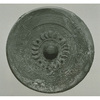 Mirror with Abstract Animals in Band
Mirror with Abstract Animals in Band
EK17-1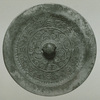 Mirror with Whirlpool Design
Mirror with Whirlpool Design
EK17-2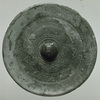 Mirror with Flower Design and Seven Arcs
Mirror with Flower Design and Seven Arcs
EK17-3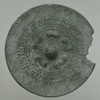 Mirror with Five Animals
Mirror with Five Animals
EK17-4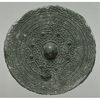 Mirror with Abstract Animals in Band
Mirror with Abstract Animals in Band
EK17-5 Mirror with Four Animals
Mirror with Four Animals
EK17-6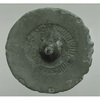 Mirror with Tooth Comb Pattern
Mirror with Tooth Comb Pattern
EK17-7 Mirror with Abstract Animals in Band
Mirror with Abstract Animals in Band
EK17-8 Mirror with Pines and Cranes
Mirror with Pines and Cranes
EK17-9 Mirror with Cranes and Pines and Butterflies
Mirror with Cranes and Pines and Butterflies
EK17-10 Mirror with Arabesque and Phoenixes
Mirror with Arabesque and Phoenixes
EK17-11 Mirror with Chrysanthemums and Birds
Mirror with Chrysanthemums and Birds
EK17-12 Mirror with Chrysanthemums, Butterflies, and Birds
Mirror with Chrysanthemums, Butterflies, and Birds
EK17-13 Mirror with Globeflowers and Flying Sparrows
Mirror with Globeflowers and Flying Sparrows
EK17-14 Mirror with Chrysanthemum Branches and Flying Sparrows
Mirror with Chrysanthemum Branches and Flying Sparrows
EK17-15 Mirror with Autumn Plants, Butterflies, and Birds
Mirror with Autumn Plants, Butterflies, and Birds
EK17-16 Mirror with Cranes and Pine Needles
Mirror with Cranes and Pine Needles
EK17-17
This object may be one within a set or the title of a set. To see all objects in the set, perform a Category Search by the Museum Number below, entering numerals only before the hyphen.







This dark greenish gray mirror is covered in areas with a bluish green patina. The rim of medium thickness is high and straight sided. A fine line, probably from the casting mold, encircles the conical knob and the knob surround of pistils spread out like flower petals. Pines growing from rocky crags and the pattern of the waves are typical of Penglai (J., Hôrai) motifs, but in place of the cranes at the upper left is a pair of birds. The pine needles and birds were made using a press mold. Within the inner border is another border in the form of stringed jewels. Another mirror with the same form of inner border and inner band design, thought to be from the same workshop as the museum example, was dedicated to the Saiendô Hall at Hôyû-ji Temple, and bears an ink inscription corresponding to 1331 (Gentoku 3).
Japan-Muromachi